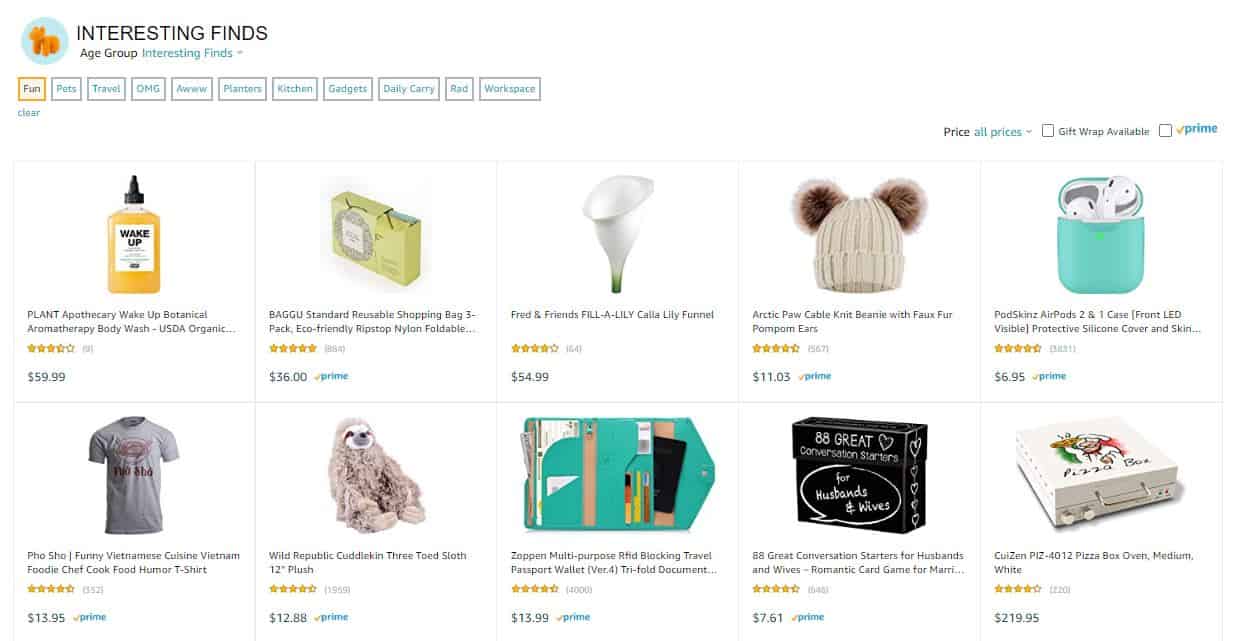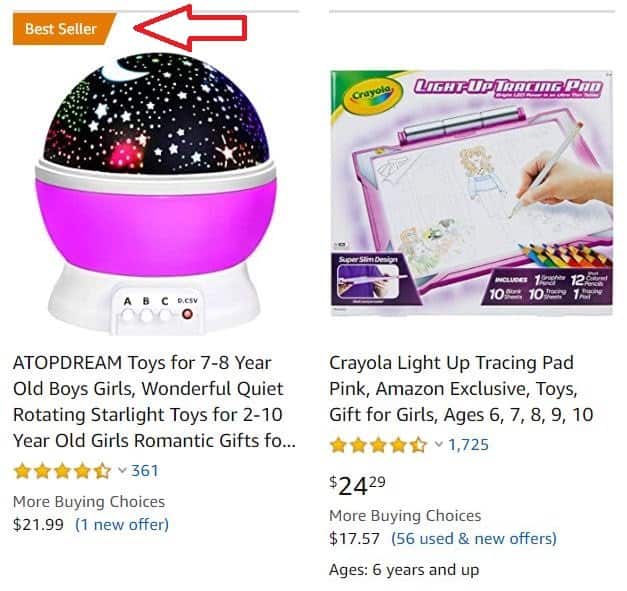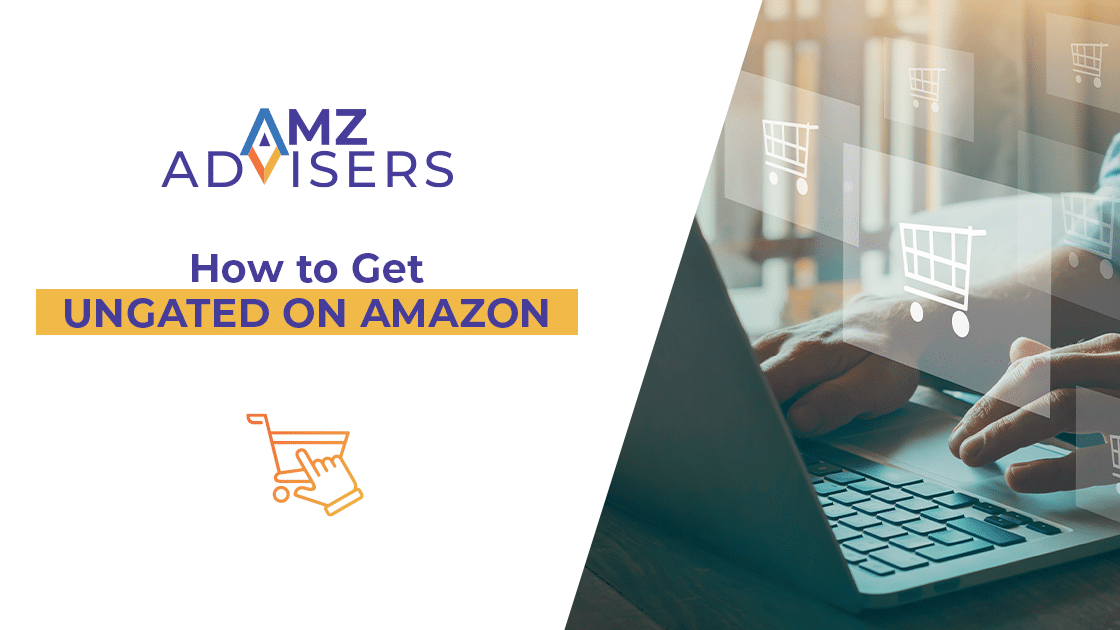In a nutshell, the way to get the Amazon Best Seller badge is to sell the greatest number of products within your category. Now, Amazon does not say specify how long you have to maintain this consistently high number of sales, which can make it tricky.
To get on top of things and increase your chances of getting the Best Seller badge, you first need to understand just what it is. Then you need to learn the strategies that you can implement to actively improve your chances of getting it. The strategies listed below should work for any product and can be very powerful if executed correctly.
In a nutshell, the way to get the Amazon Best Seller badge is to sell the greatest number of products within your category. Now, Amazon does not say specify how long you have to maintain this consistently high number of sales, which can make it tricky.
To get on top of things and increase your chances of getting the Best Seller badge, you first need to understand just what it is. Then you need to learn the strategies that you can implement to actively improve your chances of getting it. The strategies listed below should work for any product and can be very powerful if executed correctly.
The Amazon Best Seller Badge
The Best Seller badge is a small, orange mark that can do great things for your listings. It appears in every category and even some searches where your listing is top-ranking. Having the Best Seller badge means more clicks for you, higher conversions, and higher rankings. There are about a hundred product details pages that are awarded the Best Seller badge for each category, although lower level categories may not have that many. Sometimes, a category will not display it for a time if Amazon’s A9 doesn’t have enough data to pick a clear choice.
According to Amazon, the Best Seller badge is awarded based on sales on the marketplace and can change from one hour to the next. The formula is, of course, a well-kept secret, but we can make fairly educated guesses about how it works. It’s marketplace-specific, meaning that you have to be the top seller on Amazon.com to get the Best Seller badge on Amazon.com. Whether on Vendor Central or Seller Central, you are afforded the opportunity to win the Best Seller badge.
So let’s look at top strategies for getting that badge:
Strategy #1: Change Your Category
While this might sound a bit devious, this tactic is simply leveraging the Amazon system to get your product in a category where it has a better chance of being a bestseller.
You can make your listing a strong hitter in a matter of minutes simply by listing in a different category. If your product is like many others, it will belong to a niche where there are at least a few categories that are a good match descriptively. You could list in any or at least most of them without hurting your relevance.
Competition
Everyone who has had any success selling on Amazon knows that sales velocity – which is what you want to achieve a lot of to get the Best Seller badge – is directly linked to competition.
What you want to do is look at each of these categories and find out which ones have less competition. The basic principle here is that when you compete in an easier category, you can sell better. To find out which one is your best bet – the easiest category to get bestseller in – go over the categories and compare the review counts and bestseller ratings (BSRs) of each of the top 10-20 listings in each category. You are looking for the category that has the least reviews and the highest BSRs.
Note here that you don’t always have to change your category, and can go straight to Step 2 if you’re good where you are.
Strategy #2: Optimize Your Listings
If you’re not already doing this, you really need to start doing it now. Backend keywords are really important to your listings’ visibility. There are hundreds and maybe even thousands of keywords that are relevant to your product and niche. Chances are, you’re not even using a fraction of them all your listings.
Keyword Research
You’ll want to do intensive keyword research to find all these good keywords, and select the best ones to use on your listings. Start with one product, and start right on Amazon. Use the keyword finder to see all the Amazon based keywords that are relevant to your product. You will see a lot of keywords that you would never think to use.
Don’t forget to type in the keywords that the competition is using, as well as key phrase variations with commonly misspelled words. Take this list and run it through your favorite keyword planner. The Google Keyword Planner is a great one, or you can use an Amazon-specific tool. Sort through the results to find all the relevant keywords and save them in Excel or Google Sheets.
Now it’s time to sort the keywords and start optimizing your listing. There are also a ton of tools that you can use to sort keywords and remove duplicates. Remember that Amazon puts their own key phrases together, so you never need to use the same word twice, even if it’s part of a different string where the other words are different. Just take a single instance of each keyword and paste it onto another sheet.
Listing Optimization
This is where you take a good look at your listing title, bullet points and description and see where you can make changes to improve SEO for Amazon. You should be looking to add the keywords that have the highest searches and are the most relevant to your listing title and bullets. They have to make perfect sense, so be careful. Try using synonyms instead of repeating keywords, and if something just doesn’t fit, don’t force it.
Check your master list of newly searched keywords and mark those that you’ve added or that are already there. Finally, take all of the unused keywords and add the best remaining ones to your backend keywords lists. This is where you put the ones that don’t have such great traffic but are still good keywords, the brand name keywords, and even common misspellings that have high searches. Use up your 2000-character limit in the first two boxes and don’t use commas so you don’t waste valuable space.
Strategy #3: Keyword Search Links
Every time a customer searches on Amazon and clicks your listing, Amazon tracks how that customer got there – it’s all part of the big data that makes Amazon what is it today. But you can take advantage of this, too. Tracking a customer’s path creates a unique link that is needed to distinguish it from other paths. You can use this link to find out which keywords are working for you, and leverage that.
Find these links by searching Amazon for the top keyword that you want to rank for. Locate your listing and copy the unique link. Do the same for every high-value keyword that you want to rank for.
Adjust Pricing
Not surprisingly, competition features once again. For products that aren’t ranking as high as you’d like, a quick way to beat the competition – except, of course, Amazon itself – is to adjust your pricing. You want to stay just above your margins so that you can give customers a great price while still breaking even at least, or making a small profit. Make sure you check your margins and compute for all costs – item cost, shipping, packing, fees, and everything else you pay for – before you make any changes to your pricing.
Naturally, pricing is a ranking factor on Amazon. The marketplace gives a higher rank to listings that are more reasonably priced. Lower prices also naturally attract a higher sales volume, which can also help to boost you up the ranks – if the price is not so low that customers think there’s something wrong with the product.
Set Up Giveaways
In a sense, giving away some items rather than putting the price way down low can work better when you are concerned about buyer perspectives. You can still achieve a higher sales velocity and rank by running giveaways without sacrificing your reputation.
The best way to run a giveaway is to start small – say, five items – and steadily increase the number of items you give away – by fives. Run the giveaway for three to five days. By increasing the number daily, Amazon will perceive that your sales velocity is increasing over time. Remember, this is one thing that the algorithm is looking for when calculating for who should have the Best Seller badge.
Conclusion
Each of these strategies on its own can already help you boost your listings. When you’re vying for the Best Seller badge, however, you’ll want to put them all together to work simultaneously to get you the top ranking spots. Two of these strategies are quick fixes, and you really should be working on legitimately boosting your listings, but they can help you in a pinch.
Ultimately, you want to steadily work on making your products natural bestsellers in the most appropriate categories. Getting the Best Seller badge isn’t all it’s cracked up to be, after all. If you work hard on your listing optimization and invest in advertising and monitor your conversions, you will get what really matters for more sales in the end: brand recognition, customer satisfaction and customer loyalty.






